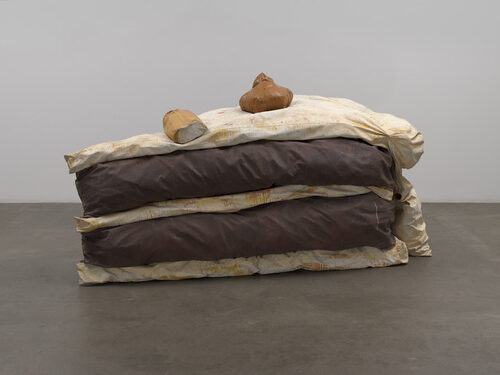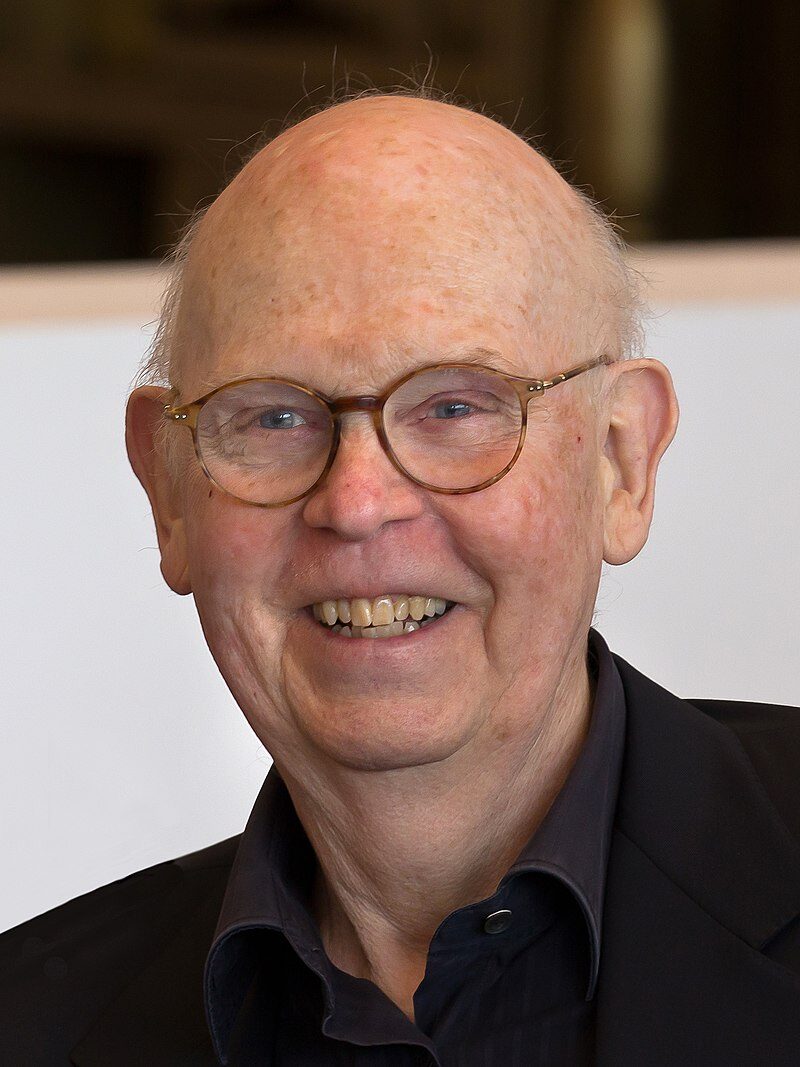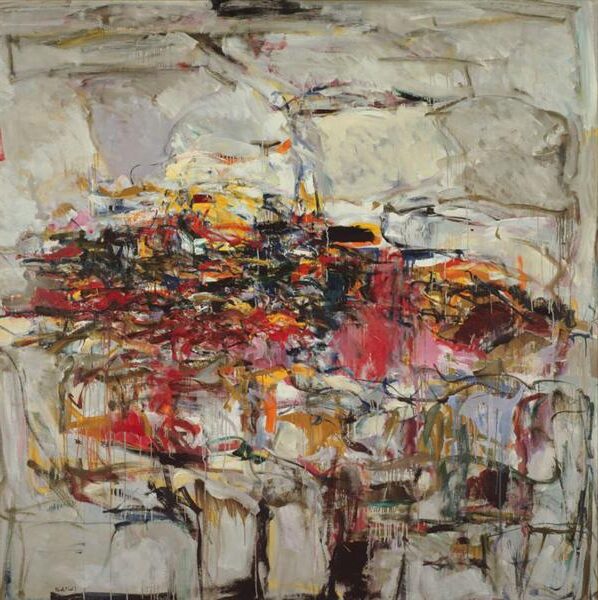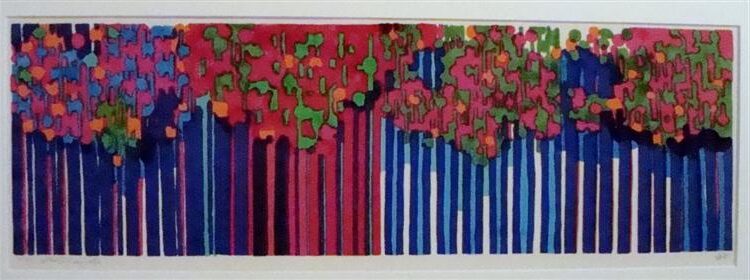Claes Oldenburg Art: Exploring His Impact on Modern Sculpture
Born: January 28, 1929; Stockholm, Sweden
Death: 18 July 2022; New York, New York, United States
Art Movement: Pop Art
Nationality: American, Swedish
Influenced By: Jean Dubuffet, Marcel Duchamp, Allan Kaprow, and Jim Dine
Institution: The School of the Art Institute of Chicago and Yale University
Claes Oldenburg Art: Exploring His Impact on Modern Sculpture
Life and Career of Claes Oldenburg
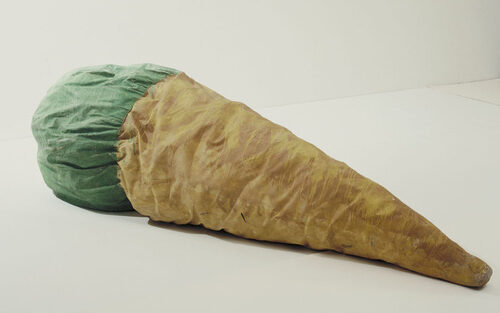
Floor Cone (1962) by Claes Oldenburg
Claes Oldenburg was a prominent figure in the art world, known for his playful, larger-than-life sculptures. His works often transformed everyday objects with humorous twists. He collaborated closely with Coosje van Bruggen, creating iconic pieces that are celebrated worldwide.
Early Life and Education
Claes Oldenburg was born on January 28, 1929, in Stockholm. His father, Gösta Oldenburg, was a Swedish diplomat, which influenced Claes’s early life, marked by international moves. The family later settled in Chicago when Gösta became the consul general of Sweden there.
In Chicago, Claes attended the Latin School of Chicago, where his interest in art began to flourish. He furthered his education at Yale University, studying literature and art history. Later, he returned to the Midwest to attend The School of the Art Institute of Chicago, deepening his artistic knowledge and skills.
These formative years laid the groundwork for his future endeavors in art.
Collaborations with Coosje van Bruggen
In the 1970s, Oldenburg began working with Coosje van Bruggen, a partnership that spanned three decades. Their collaboration brought forth numerous public art installations that combined Oldenburg’s vision with van Bruggen’s input as an art historian.
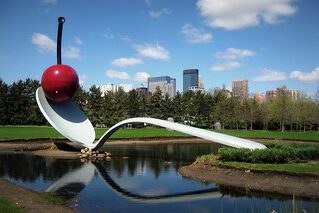
Spoonbridge and Cherry (1988) by Claes Oldenburg and Coosje van Bruggen
Together, they created renowned works like “Spoonbridge and Cherry” in Minneapolis and “Flying Pins” in Eindhoven. Their synergy resulted in projects that incorporated playful and unexpected forms, further cementing Oldenburg’s reputation as a leading figure in Pop Art. This partnership proved to be a defining period in his career, showcasing their joint ability to create whimsical and thought-provoking sculptures that challenged artistic norms.
Significant Milestones
Oldenburg’s career is marked by several significant milestones. After becoming a naturalized U.S. citizen in 1953, he moved to New York City, where he became involved in the thriving art scene. His initial works, often known for their bold and unconventional approach, included soft sculptures of mundane items.
The 1960s saw him rise to prominence with pieces like “Lipstick Ascending on Caterpillar Tracks,” a monument at Yale. Oldenburg’s innovative approach to art, blending everyday themes with a larger-than-life scale, made him a pioneering figure in the Pop Art movement. His career achievements continue to inspire artists and audiences alike.
Artistic Style and Influences
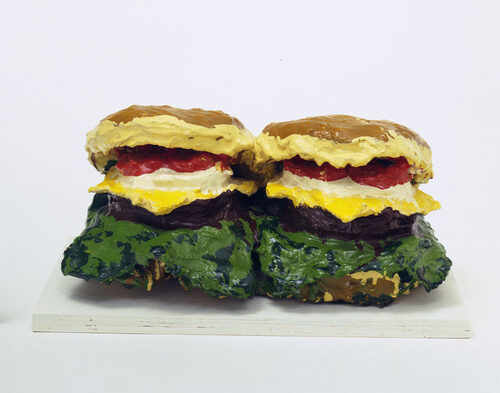
Two Cheeseburgers, with Everything (Dual Hamburgers) (1962) by Claes Oldenburg
Claes Oldenburg‘s artistic journey is marked by his transition from abstract expressionism to pop art, the creation of soft sculptures, and his involvement in performance art events known as happenings.
Shift from Abstract Expressionism to Pop Art
Oldenburg’s early work showed the influence of abstract expressionism, characterized by a focus on spontaneous, expressive gestures. He gradually moved towards pop art, embracing themes from mass culture and consumerism. Pop Art, which flourished in the 1950s and 1960s, focused on mundane imagery and objects.
Artists like Andy Warhol and Tom Wesselman became central figures. Oldenburg stood out by reimagining and enlarging everyday items, turning them into playful sculptures. His colorful, large-scale works often comment on the commercialization of society, sharing themes with contemporaries and challenging viewers to find meaning in the ordinary.
Development of Soft Sculptures
Oldenburg’s innovation in soft sculptures set his work apart in the art world. These pieces were typically made using materials like vinyl or canvas, filled with stuffing. This new approach to sculpture disregarded traditional materials such as stone or metal.
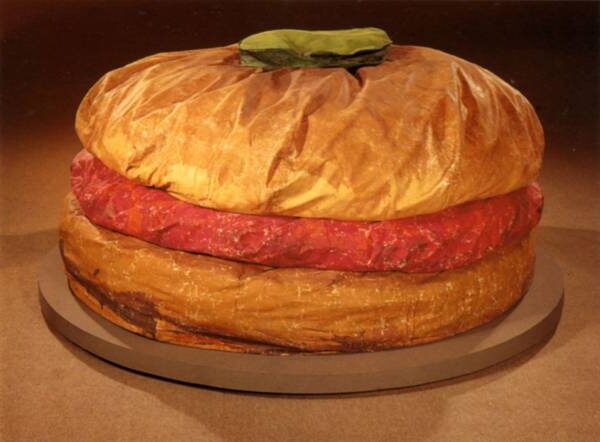
Floor Burger (Giant Hamburger) (1962) by Claes Oldenburg
Soft sculptures added a humorous dimension, as objects like hamburgers or toilets were depicted in unexpected ways. This unique style gave the everyday object a new tactile and visual experience. Allan Kaprow’s happenings and the Pop Art movement influenced this playful yet critical approach. Oldenburg’s work with his wife, Coosje van Bruggen, also expanded this style, leading to more collaborative and imaginative pieces.
Participation in Happenings
Oldenburg was actively involved in happenings, a kind of performance art that emerged in the late 1950s and 1960s. Happenings were often unplanned and participatory. Unlike traditional performances, they emphasized the experience for both the performer and the audience.
Judd Memorial Church in New York hosted some of these early events, bringing together artists like Jim Dine and Allan Kaprow. These happenings blurred the line between art and life, encouraging interaction. Oldenburg’s involvement illustrated his commitment to pushing artistic boundaries and engaging with new forms of artistic expression. His participation helped cement his reputation as a leading figure in contemporary art innovation.
Iconic Works and Public Art Installations
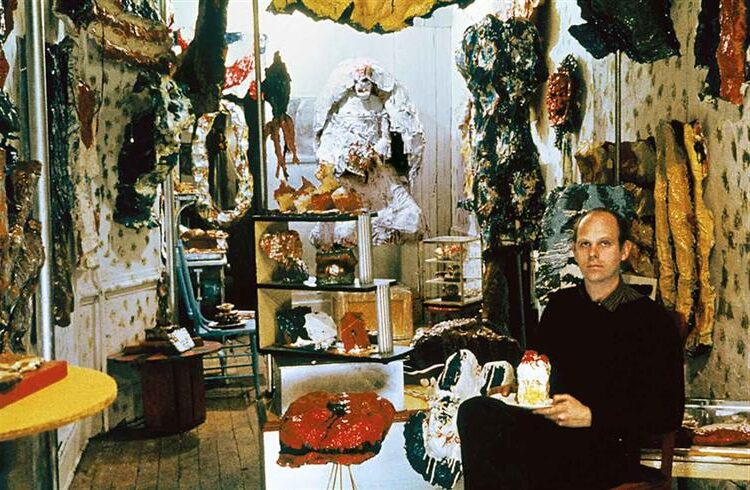
The Store (1961) by Claes Oldenburg
Claes Oldenburg is renowned for transforming ordinary consumer items into innovative artworks. His pieces often challenge perceptions and explore our relationship with everyday objects. Oldenburg’s large-scale works highlight the grander narratives embedded in mundane items.
The Store and Consumer Goods Motifs
“The Store” was a critical stepping stone in Oldenburg’s career. It featured brightly painted plaster sculptures resembling consumer goods. These works blurred the line between art and commodity, challenging traditional art values. Oldenburg’s emphasis on everyday items reflected popular culture’s growing interest in consumerism. His soft sculptures, like the iconic Giant Hamburger and Ice Cream Cone, encapsulated humor and irony, exploring themes of mass consumption and material culture.
Pop sculpture’s playful yet critical commentary attracted much attention to Oldenburg. His methods inspired later artists to explore consumer culture. He embraced art as something accessible and engaging, moving away from the elitist confines of art history.
Notable Large-Scale Projects
Oldenburg, often collaborating with Coosje van Bruggen, explored large-scale projects that became iconic public art installations. Among them, Spoonbridge and Cherry in the Minneapolis Sculpture Garden stands out as a favorite, marrying quotidian elegance with monumental scale. This piece exemplifies the inventive blend of form and function that defined his work.

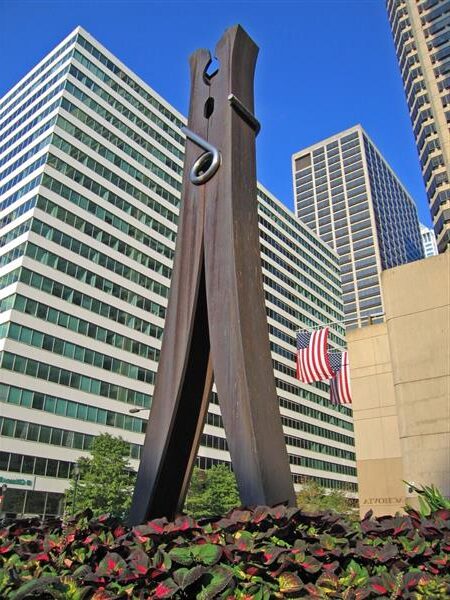
“Dropped Cone” and “Clothespin” are other significant contributions to public art. These transformations of domestic objects into gigantic, playful structures challenged viewers’ perspectives. In Philadelphia, the Clothespin introduced a mundane item into a new environment, sparking public dialogue.
Works such as Lipstick Ascending on Caterpillar Tracks and Free Stamp further established Oldenburg’s reputation. His public sculptures remain key landmarks, echoing societal themes while integrating seamlessly into urban landscapes. His ability to harness the familiar in unexpected dimensions continues to impact both art and public spaces, attracting audiences worldwide.
Techniques and Materials
Claes Oldenburg was noted for his innovative use of materials and techniques. His art often emphasized ordinary materials to create unexpected forms and textures. His work highlighted both the material transformation of everyday objects and the inventive creation of soft and three-dimensional forms in sculpture.
Use of Everyday Materials
Oldenburg frequently transformed everyday objects into art. He often chose materials like cardboard, burlap, and newspapers to form the basis for his creations. By incorporating enamel paint and vinyl, he added vibrant colors and textures to his pieces, enhancing their visual appeal.

Knäckebröd (1966) by Claes Oldenburg
These materials allowed Oldenburg to bridge the gap between art and the mundane, making the ordinary seem extraordinary. Plaster-soaked canvas and chicken wire also played significant roles in shaping his more structured designs, providing a sturdy foundation while maintaining an accessible and everyday aesthetic. This method of layering unexpected materials lent his sculptures a distinct and recognizable style.
Creation of Soft and Three-Dimensional Forms
Oldenburg’s signature artistic contribution was his large, soft sculptures. Using materials like soft fabric forms and foam rubber, he could explore scale and flexibility in innovative ways. His iconic soft sculptures often depicted common items such as household goods or food, further highlighting his fascination with elevating the commonplace.
These creations challenged traditional notions of sculpture by focusing on softness and pliability instead of rigidity. His three-dimensional forms were often monumental in scale, yet they retained a playful and approachable quality. Oldenburg’s ability to manipulate materials to defy expectations solidified his legacy in the art world.
Legacy and Impact on Art
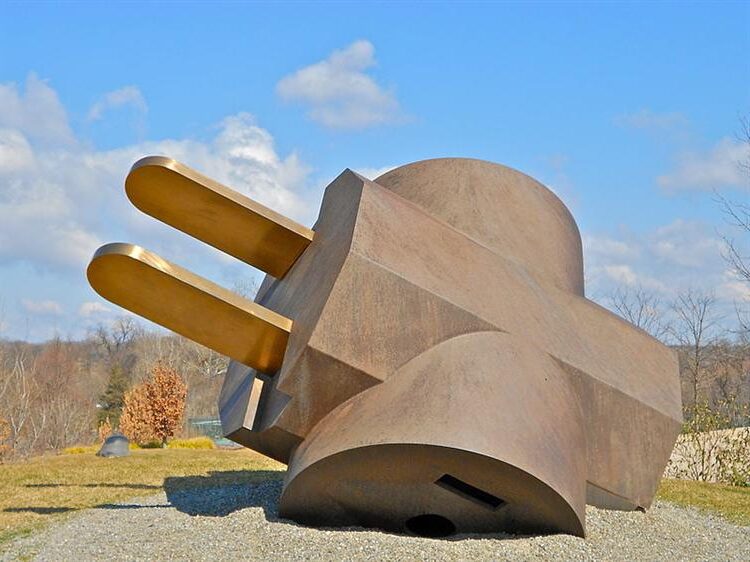
Plug (1970) by Claes Oldenburg
Claes Oldenburg was a transformative figure in art, whose pioneering work in sculpture and Pop Art left a lasting mark. His unique use of everyday objects and three-dimensional forms reshaped how artists view commonplace items. While his influence is deeply felt in the Pop Art Movement, it extends beyond, affecting contemporary artists around the world today.
Role in the Pop Art Movement
Oldenburg played a significant role in the Pop Art Movement as an American sculptor. His approach was revolutionary, focusing on commonplace objects in unexpected sizes and materials. This work challenged traditional perceptions of art.
His pieces, such as “Snapshots from the City,” captured the essence of contemporary life. Unlike his peers, Oldenburg’s art was often playful yet thought-provoking. The School of the Art Institute of Chicago contributed to his educational background, enriching his development within this form.
The movement benefited from his innovative ideas and sculpture techniques, drawing new attention to consumer culture. His works stood alongside notable artists like Robert Rauschenberg, bringing dynamic contrasts to Pop Art.
Influence on Contemporary Art and Artists
Oldenburg’s impact goes beyond the Pop Art era. Contemporary art and artists are still influenced by his creativity. Using bright colors and oversized scales, Oldenburg set the stage for modern artists like Jeff Koons and Damien Hirst to explore similar themes.
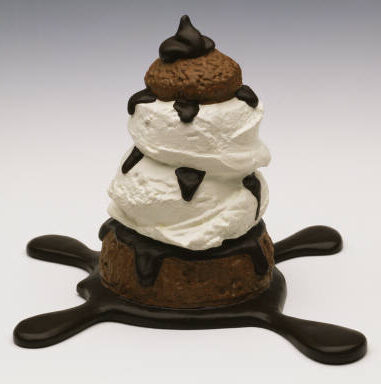
Profiterole (1990) by Claes Oldenburg
His ability to turn everyday items into art inspired a new generation to experiment with three-dimensional and fluxus styles. This resulted in a broadening understanding of what sculpture and art can be. Through this, he left an indelible mark on art history, encouraging exploration and expansion of artistic boundaries.
By challenging norms, Oldenburg urged artists to see ordinary objects as profound art forms.
Frequently Asked Questions
Claes Oldenburg’s art is full of playful yet profound pieces that change how people see everyday objects. His work is famous for its large scale and imaginative designs.
What are the defining characteristics of Claes Oldenburg’s pop art?
Claes Oldenburg is known for his large sculptures of everyday objects. He transformed simple items into monumental works, often using bright colors and unexpected shapes. This approach helped make pop art more relatable and engaging for the public.
Which mediums did Claes Oldenburg commonly incorporate into his artwork?
Oldenburg used a variety of materials in his art, including plaster, stainless steel, and mixed media. He enjoyed experimenting with different textures and forms to bring common objects to life in surprising ways. His art often mixed hard and soft elements to challenge perceptions.
Which Claes Oldenburg sculpture is considered his most iconic work?
One of Claes Oldenburg’s most well-known works is the “Spoonbridge and Cherry” located in Minneapolis. This sculpture features a giant spoon with a cherry balanced on it, capturing his signature blend of humor and scale. It stands as a symbol of his unique contribution to public art.
How did Claes Oldenburg impact the art movement he was associated with?
Oldenburg played a significant role in the pop art movement by bringing an accessible and playful approach to art. His works made art approachable and encouraged people to see art in everyday life. His influence extended to future artists who continued to explore similar themes.
Can you describe the techniques employed by Claes Oldenburg in creating his art?
Oldenburg often began with sketches and models to plan his sculptures. He used a combination of sculpture techniques to create large-scale versions of everyday items. By focusing on scale and detail, he was able to transform simple objects into something extraordinary.
What is the significance behind Claes Oldenburg’s food sculptures?
Oldenburg’s food sculptures are known for their humorous and oversized representations. They take common foods like ice cream or hamburgers and amplify them to an enormous scale, adding an element of fun and whimsy.
This work invites viewers to reconsider how they perceive ordinary life.

